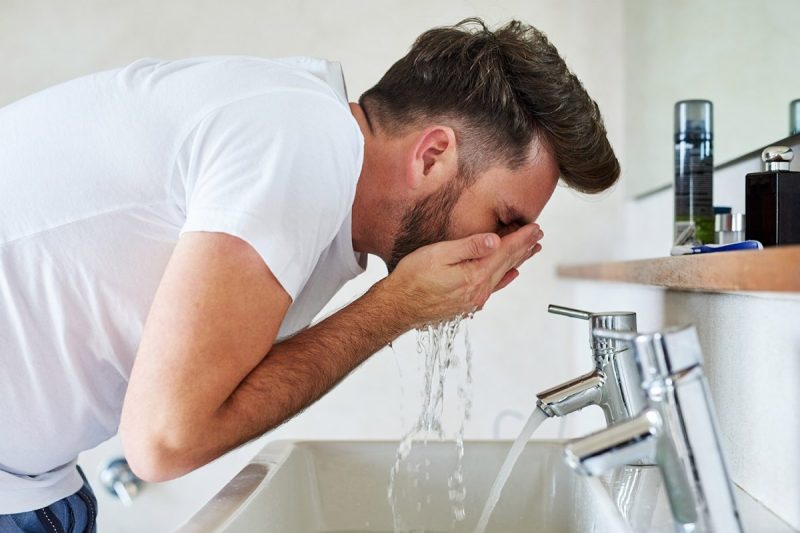For a classic and casual look for your facial hair, stubble is a great option for all sorts of face shapes and ages. It’s also, rather handily, one of the easiest looks to maintain. But easy maintenance doesn’t mean no maintenance, and if you want to look your best then you shouldn’t skip on taking care of your stubble and your skin.
Stubble is a good choice if you’re impatient for your beard to grow or if regular shaving is causing havoc to your skin. And with a little work to keep it neat and tidy, stubble can be an attractive and fresh look. We’ve rounded up a handful of tips to have your stubble looking its best.
Cleanse and exfoliate

Like any great masterpiece, you need a clean canvas to start on. A good quality cleanser will keep your skin’s moisture in balance, leaving behind a face all set for shaving and a great base for growing new hair.
A beard shampooing and conditioning routine will also keep your hair strong and healthy during the growing process. The role of a beard-specific washing product is to get rid of dirt and excess oils while leaving (and adding) natural oils that will keep your beard and skin healthy.
Pick the right trimmer

Trimmers come in a variety of styles, sizes, and price points. At the end of the day, it’s important to make a selection that best suits your routine.
Daily shapers may want to invest in a nicer, more durable model for their arsenal. You’d want something safe for sensitive skin that features contouring head tracks for extra comfort and stabilization in those hard-to-reach areas. Those with slower facial growth could get by with a budget option that highlights a handful of different trim lengths and attachments. No matter what, though, you’ll need a regular razor—multiblade, single blade, or safety—for keeping the neckbeard in check and to give your facial hair the bold border it deserves.
Find the right length for you

Any beard trimmer or shaver that you buy should come with several blade guards to allow you to maintain different lengths of stubble. If this is your first foray into the five o’clock shadow, consider growing out your beard and then trimming it down to your desired length.
Start with the longest blade guard and test it out. Too long? Size down one, then repeat until you’re satisfied. The worst that could happen is you have to shave completely and start all over again. The best? Well, you’re on your way to being that untamed, well-maintained beast you were always meant to be.
A quiet note on beard color: If you have lighter-colored facial hair (or multi-colored facial hair), it’s important to grow your stubble a little longer than our darker bearded brothers. Going too short on a blonde beard can subvert your goal of maintaining an appropriately cool stubble. If your beard is too light, in some instances, it may not appear to exist at all. Men with dark hair, on the other hand, can sport extremely short stubble without looking any worse for the wear.
Sharpen your look

Facial hair has a tendency to pop up outside of the normal growing regions of the face. Patches can and will appear randomly, so carefully shave those and keep uniform lines to complement your structure. This is where the time and effort you took to pick out a trimmer pays off.
Take it from us: The best way to remain semi-presentable while cultivating your beard is to avoid the dreaded neckbeard. Trim only about one inch above your Adam’s apple, or you’ll risk losing the depth of your beard growth. This technique can make your beard stand out early on; the contrast between beardliness and non-beardliness will let people know you’re serious.
Trimming the cheeks is also essential. Again, you don’t want to overdo it—just use a razor to wrangle a few stragglers that wander too far north. If you have something akin to a Chewbacca beard, you’ll need to take more drastic measures. Shave your cheek hair so it’s even with the bottom of your nose.
Don’t skimp on beard oil

Before you wrap things up, massage in a few drops of beard oil, which keeps your whiskers soft and the skin on your face feeling fantastic. There are dozens of options these days to complement any skin type. We recommend trying some out to find the right essential oils for your own face, as well as a scent that tickles your fancy. Need suggestions? Here are The Manual’s favorite beard oils.
How long stubble takes to grow
There’s no single answer on how long stubble takes to grow, as it varies for each person. But typically, the average rate of growth is around half an inch of beard growth per month. So how long you’ll have to wait for your perfect stubble to grow in depends not only on how fast your beard is growing, but also on what length you’ve decided suits you best.
If you’re following our advice to first let your stubble grow out to beard length before trimming it back, then you’re looking at an average of a couple of weeks’ growth to get to typical beard length. Once you’ve got a decent amount of beard growth to work with, then you can trim to find the length for you.
Stubble Simplicity
With a little bit of practice and patience, you will find the right look for your stubble. Then it’s only a matter of time until you have the trim length nailed and how many days between trim-ups before you have to take it back down again.



